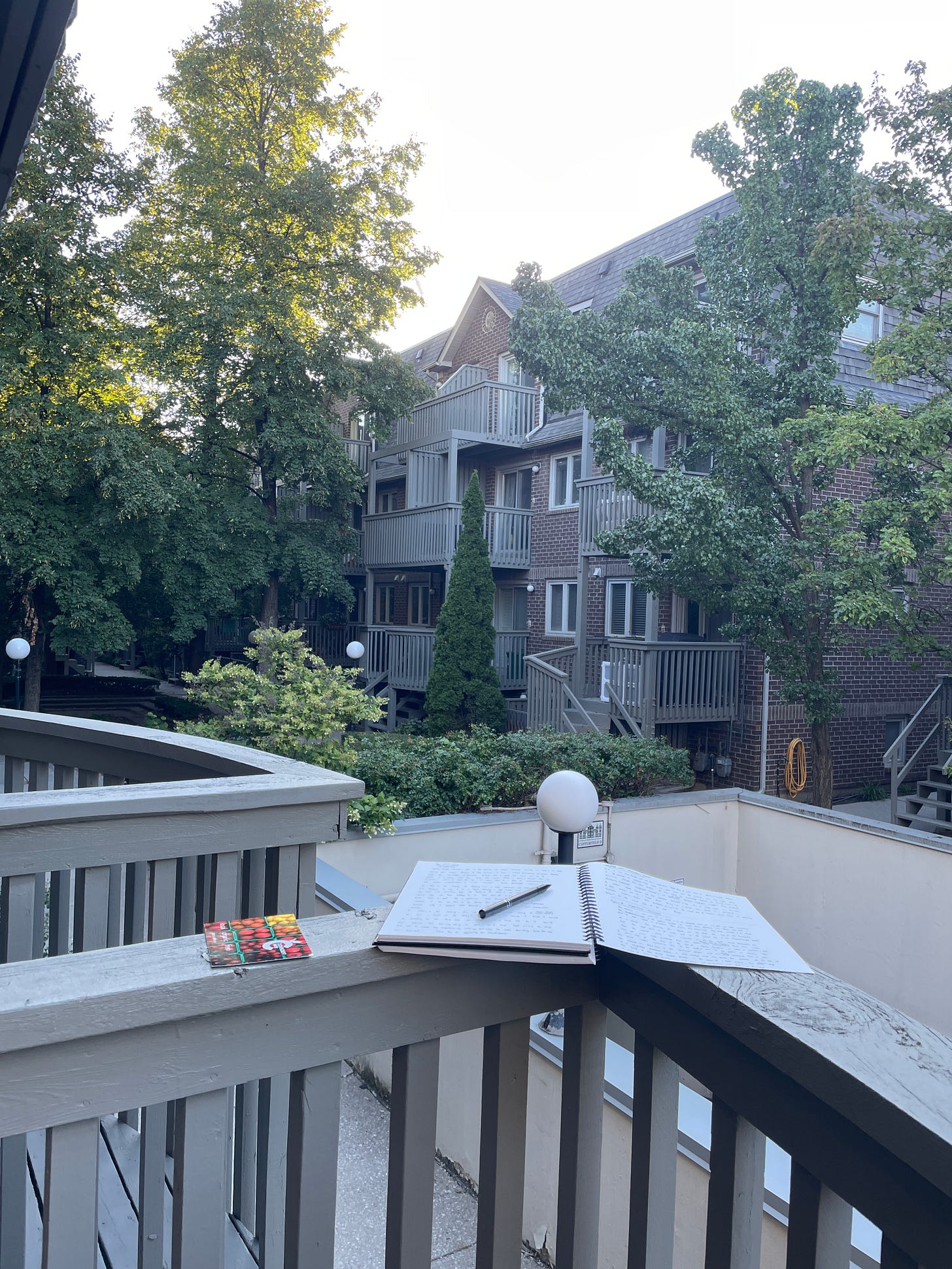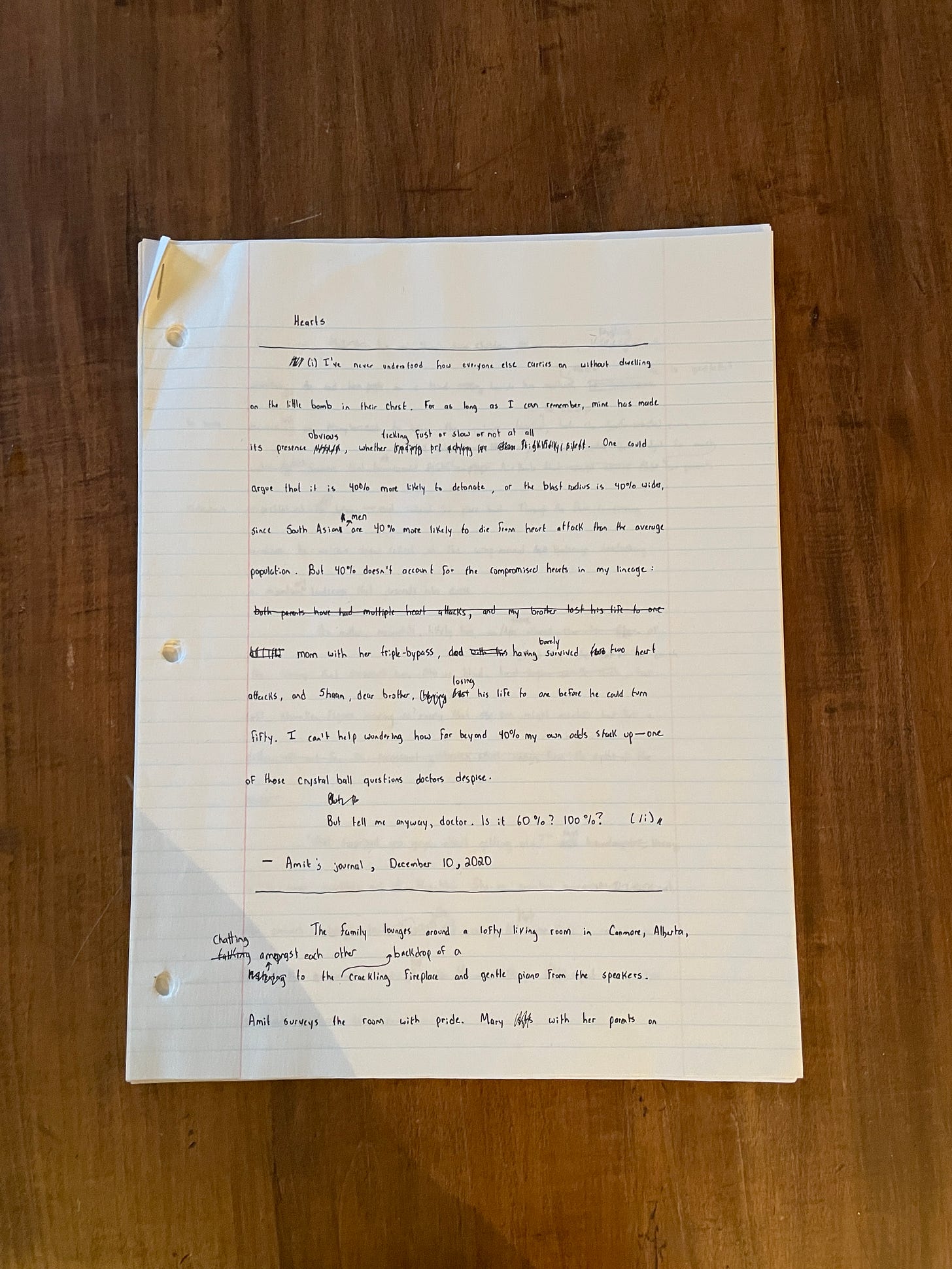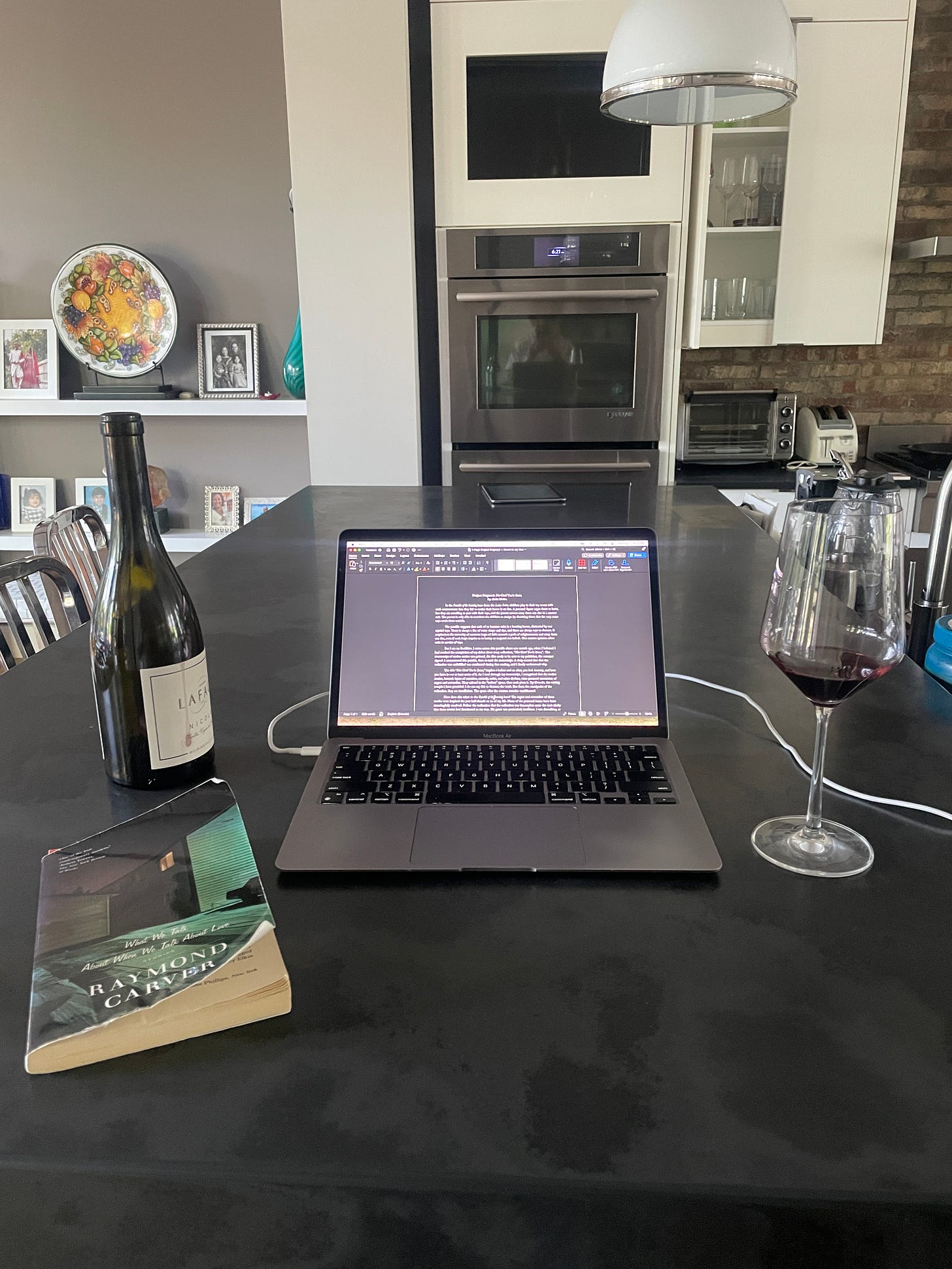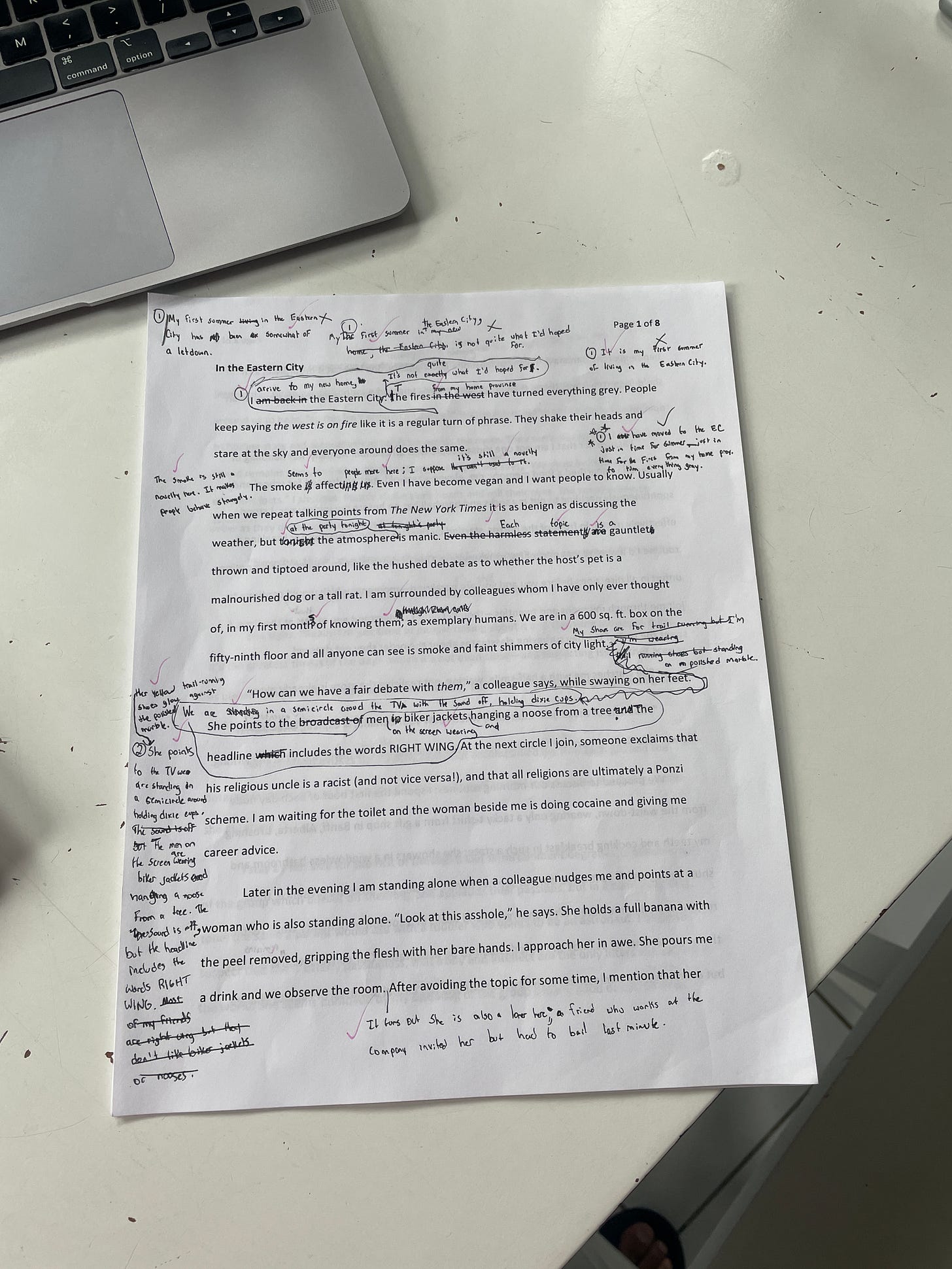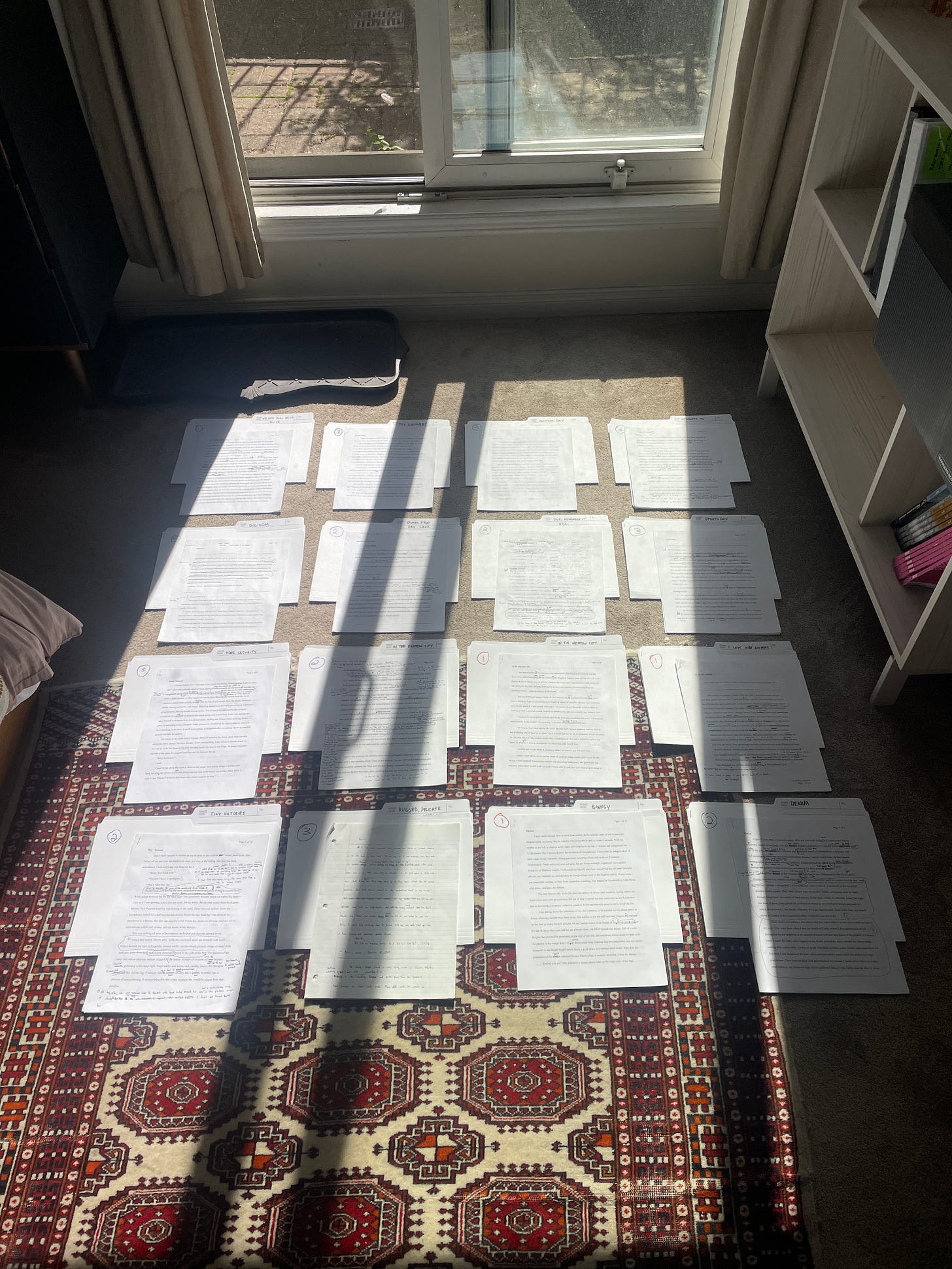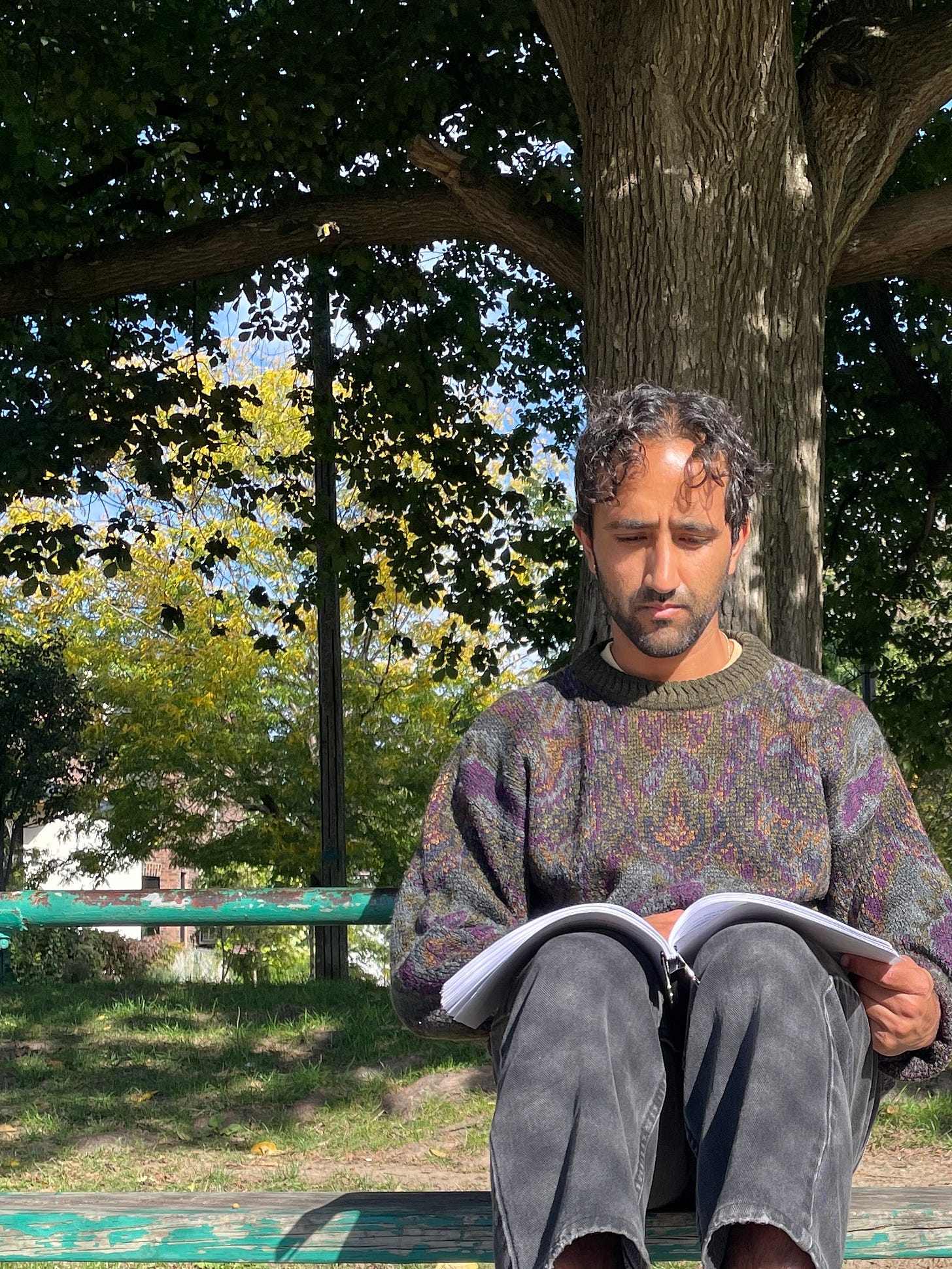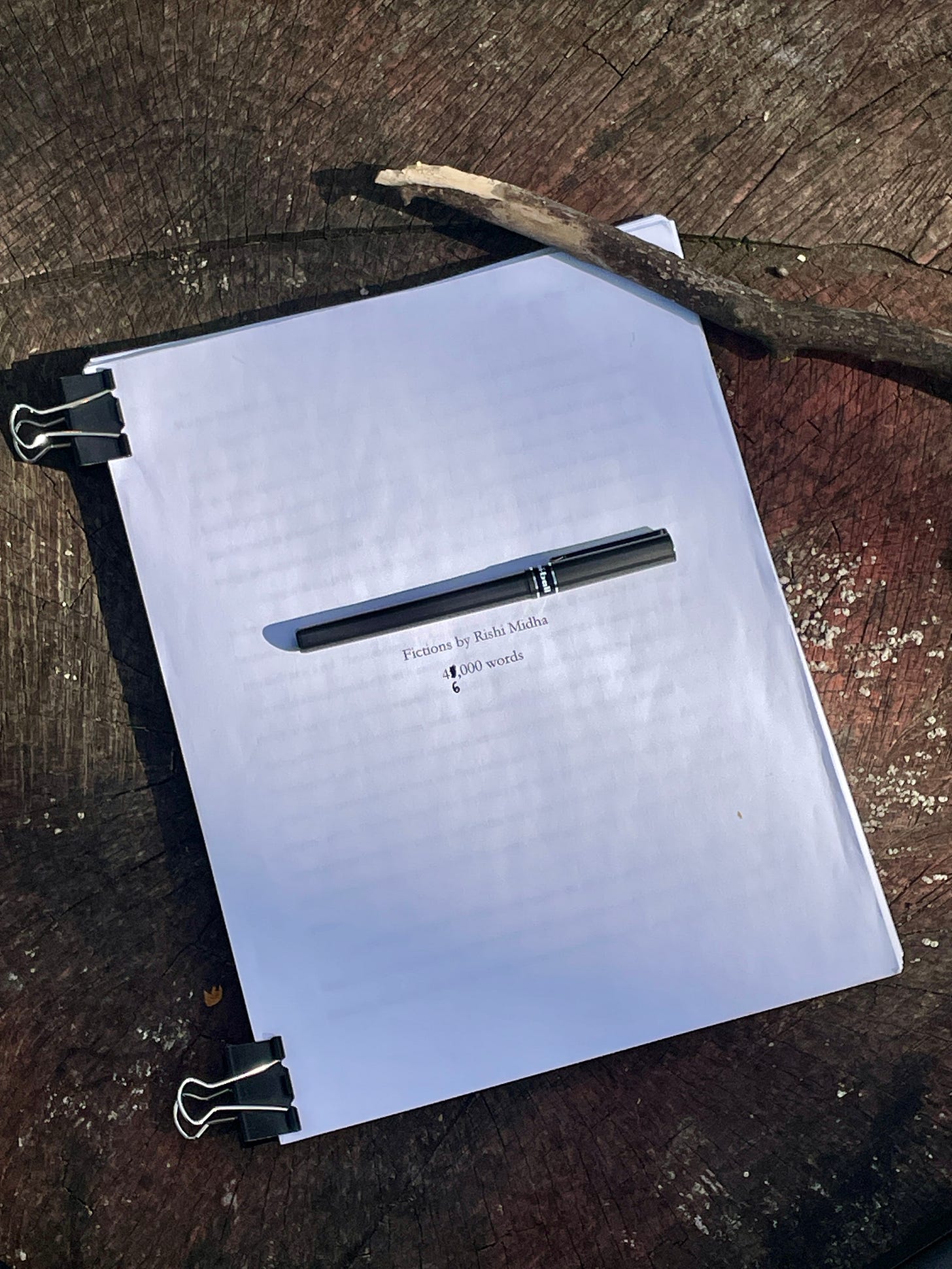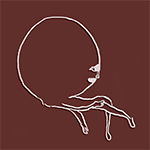A Peek into the Hobbit Hole
Exciting things r brewing
Good morning everyone. I hope you’ve enjoyed the last few fictions.
Today, an exciting update: my debut short story collection has survived a full read-through without my feeling the need to tear it to pieces. Quite the opposite, in fact; the last page is stained with several tears of joy and relief. The manuscript has been passed off to the more qualified and (hopefully) less destructive hands of my publisher for review.
In light of this milestone, I’m allowing myself the small indulgence of sharing some behind-the-scenes footage of the work that went into these stories. I can only assume that most of my newsletter readers have not read the fiction I’ve published (via trad publishers), which—for better or worse—undergoes much more scrutiny than anything I share via welktober.
Here is a sample of the typical treatment a story receives.
Morning Meditation
First thing in the morning, before starting “real work”, I do what is effectively a meditation in written form. This involves looking at something—a plant, an object, whatever—and writing one page of interesting details observed. I would recommend this to anyone, writer or otherwise, as a supremely unproductive way to start the day. I have been describing the view from my patio, above, every morning for the past four weeks (almost thirty pages!), unearthing wonderful details that have been overlooked for the past five years.
First Draft
The first draft of anything (including this email) is written longhand. If the ideas are spilling out too fast for the pen, I’ll record a voice note to avoid missing a good thought—but that’s a rare, blessed occasion. I stay away from my computer as much as possible. As is true of most writers, my process is largely a negotiation with my inner editor, offering him crumbs to sustain his important work without appeasing him such that he gets greedy and cannibalizes the good writing already done. Edits are much too available on a word processor; MacBooks are Munich for the inner editor.
Note: yes the above is a real first draft, yes it is shitty, and no you need not squint and read it.
Transcribing
Bringing the first draft into the digital realm is my least favourite task, so I prefer to drink alcohol while doing it. I also keep a writer who uses plain, efficient language (e.g. Raymond Carver) within arms reach for when I get discouraged or overzealous with edits.
Why is this my most dreaded task? Because the first draft is almost always shit. This means re-writing, which often kills the few nuggets of sentiment that originally inspired the piece. Once lost, these can be hard to recover. If a piece gets abandoned, it tends to happen during this stage.
In the rare cases where the first draft is not shit, I’m mindlessly transcribing words between paper and screen. There is, as such, no scenario where this task is enjoyed.
Print, Edit by Hand, Update Document, Repeat
A story will go through ~three cycles of this, on average. The first round is often intense (above image = first round), as the changes tend to be structural. Many stories get abandoned here. Second and third round edits tend to occur at the word or sentence level. I prefer to do the latter reads at a cafe, park, or bar, rather than at my desk. I keep my pen in my pocket and try to read them fast, as if I were a normal person.
I have made a point of not buying a printer, and instead printing at the library, which is a 10 minute bike ride away. This adds another layer of friction to editing. It’s not worth a re-reprint for minor word changes, which I often end up undoing a few days later. Once a story feels like it’s at 90%+, my distance from a printer (and my love for trees!) discourages me from needlessly overworking it.
Put the mfs in Order
After doing all of the above ~thirty times and emerging with ~fifteen stories I like, we have enough material for a book, which now needs to be put in a sensible order. I quite enjoyed this process. The stories lived on my bedroom floor for about a week. I’d check the order first thing in the morning and before bed and do little tweaks until a few days passed with no changes.
The little circles on the top left of the folders were my misguided attempts to rank the stories from 1 (best) to 3 (worst), so I could ensure “quality” was distributed across the collection. I eventually abandoned this approach; my concept of good and bad with regards to my work is as fickle as the wind.
Read it Somewhere Peaceful and Weep
Try and breathe. Try not to be self-aggrandizing (like I’m doing now), because it really doesn’t matter; it’s a stack of paper. Pretend you’re at the park reading The Bell Jar or some classic novel—that no matter what your impression is of the work, you’re going to tell people you love it.
Voila
Send the thing to the publisher and emerge from the Hobbit Hole for a while. Thanks for stopping by!



